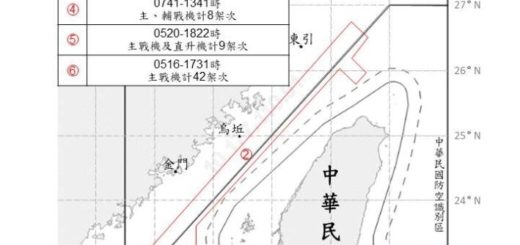Türkiye’s SOM-J Missile Executes Successful Sea-Skimming Flight and Precision Strike
{loadposition bannertop}
{loadposition sidebarpub}
The SOM-J cruise missile, developed by TÜBİTAK SAGE with Roketsan as industrial partner, executed a successful live-fire sea-skimming engagement against a surface target on 13 October 2025. This test, shown in released footage and confirmed by government posts, demonstrates matured indigenous guidance, datalink and seeker capabilities that expand Turkish stand-off maritime strike options without foreign release constraints.
On the 13th of October, 2025, Türkiye unveiled new test footage confirming that the SOM-J cruise missile has completed a successful live-fire engagement at sea. Developed by TÜBİTAK SAGE with Roketsan as the industrial partner responsible for productionization and mission-system integration, the weapon demonstrated very-low-altitude sea-skimming, post-launch controllability, and precise terminal attack against a surface target. The sequence underscores how indigenous guidance, datalink and seeker technologies have matured to operationally relevant levels for maritime strike from legacy fighters. It matters because it compresses enemy reaction timelines at sea while giving the Turkish Air Force a stand-off option that does not depend on foreign release approvals or supply chains.
Follow Army Recognition on Google News at this link
Measured against international peers, SOM-J occupies a deliberate middle ground: it offers greater destructive effect and stand-off than very small, saturation-oriented munitions while keeping a lighter footprint and simpler platform integration than the largest, very-long-range anti-ship missiles (Picture source: Roketsan)
SOM-J is the compact maritime-strike member of the broader SOM family, engineered to be carried by frontline aircraft and unmanned platforms while retaining a warhead sized to disable medium-tonnage surface combatants. The missile pairs a 140 kg high-explosive blast-fragmentation / semi-armor-piercing warhead with a modular airframe (3.9 m length, ~540 kg launch mass) and a sensor suite built for the maritime littoral: inertial navigation backed by anti-jam GPS, terrain-referenced navigation, an imaging-infrared terminal seeker with automatic target acquisition, and a network-enabled datalink that supports mission updates and cooperative engagement. That architecture lets SOM-J fly very-low-altitude, terrain-following profiles to minimize radar exposure while sustaining the seeker lock necessary for precision terminal effects.
The program’s trajectory reflects more than a decade of iterative design and progressive integration. Originating from the SOM land-attack family, engineers re-balanced range, mass and guidance to produce a maritime-optimised variant that meets fast-jet carriage constraints; captive-carry and separation trials were followed by guided firings earlier this year, and the latest video shows the missile separating from an F-16 before executing a controlled descent to sea-skimming altitude, sustained low-level transit and an agile terminal run, behaviours that demonstrate both separation dynamics and in-flight control logic working in concert over a cluttered sea environment. The partnership between TÜBİTAK SAGE (development) and Roketsan (industrialization and mission-system integration) has been central to moving the design from laboratory validation to operationally representative firings, accelerating the route to squadron-level tactics and training.
Measured against international peers, SOM-J occupies a deliberate middle ground: it offers greater destructive effect and stand-off than very small, saturation-oriented munitions while keeping a lighter footprint and simpler platform integration than the largest, very-long-range anti-ship missiles. That trade-off, larger warhead and modern seeker/datalink at ranges around 200 km, with a design optimized for F-16 and UCAV carriage, favors flexible sortie generation, sovereign sustainment and rapid tactical adaptation in congested littorals. In practical terms, SOM-J’s combination of sea-skimming survivability, mid-course updateability and precise terminal homing produces a weapon suited to degrading frigate-class sensors and mission systems without imposing the logistical and operational burden of the heaviest long-range systems, a balance that aligns with Türkiye’s immediate operational needs and industrial strategy.
Strategically, each validated test tightens Türkiye’s control over critical maritime corridors in the Aegean, Eastern Mediterranean and Black Sea by pairing air-launched stand-off strike with national ISR and targeting networks. Sea-skimming flight and post-launch control reduce exposure of launch aircraft to shipborne air defenses, enabling multi-axis, time-on-target tactics from mixed packages of fighters and unmanned systems. Industrially, the Roketsan–TÜBİTAK SAGE partnership strengthens sovereign design authority over seekers, guidance software and fuzing, capabilities that cascade into other missile families and harden supply security during crises. Looking ahead, the same architecture is adaptable to follow-on platforms and evolving concepts of operation, from cooperative engagement with drones to maritime interdiction inside contested air defence umbrellas.
Today’s live-fire footage offers more than a highlight reel; it is a proof point that a domestically developed, F-16-launched maritime strike missile can combine sea-skimming persistence, in-flight control and terminal precision in one package. For Türkiye, that translates into a credible, scalable tool to hold surface targets at risk across its near seas while reinforcing industrial autonomy in a technology area that is central to deterrence at sea.
Written by Teoman S. Nicanci – Defense Analyst, Army Recognition Group
Teoman S. Nicanci holds degrees in Political Science, Comparative and International Politics, and International Relations and Diplomacy from leading Belgian universities, with research focused on Russian strategic behavior, defense technology, and modern warfare. He is a defense analyst at Army Recognition, specializing in the global defense industry, military armament, and emerging defense technologies.

{loadposition bannertop}
{loadposition sidebarpub}
The SOM-J cruise missile, developed by TÜBİTAK SAGE with Roketsan as industrial partner, executed a successful live-fire sea-skimming engagement against a surface target on 13 October 2025. This test, shown in released footage and confirmed by government posts, demonstrates matured indigenous guidance, datalink and seeker capabilities that expand Turkish stand-off maritime strike options without foreign release constraints.
On the 13th of October, 2025, Türkiye unveiled new test footage confirming that the SOM-J cruise missile has completed a successful live-fire engagement at sea. Developed by TÜBİTAK SAGE with Roketsan as the industrial partner responsible for productionization and mission-system integration, the weapon demonstrated very-low-altitude sea-skimming, post-launch controllability, and precise terminal attack against a surface target. The sequence underscores how indigenous guidance, datalink and seeker technologies have matured to operationally relevant levels for maritime strike from legacy fighters. It matters because it compresses enemy reaction timelines at sea while giving the Turkish Air Force a stand-off option that does not depend on foreign release approvals or supply chains.
Measured against international peers, SOM-J occupies a deliberate middle ground: it offers greater destructive effect and stand-off than very small, saturation-oriented munitions while keeping a lighter footprint and simpler platform integration than the largest, very-long-range anti-ship missiles (Picture source: Roketsan)
SOM-J is the compact maritime-strike member of the broader SOM family, engineered to be carried by frontline aircraft and unmanned platforms while retaining a warhead sized to disable medium-tonnage surface combatants. The missile pairs a 140 kg high-explosive blast-fragmentation / semi-armor-piercing warhead with a modular airframe (3.9 m length, ~540 kg launch mass) and a sensor suite built for the maritime littoral: inertial navigation backed by anti-jam GPS, terrain-referenced navigation, an imaging-infrared terminal seeker with automatic target acquisition, and a network-enabled datalink that supports mission updates and cooperative engagement. That architecture lets SOM-J fly very-low-altitude, terrain-following profiles to minimize radar exposure while sustaining the seeker lock necessary for precision terminal effects.
The program’s trajectory reflects more than a decade of iterative design and progressive integration. Originating from the SOM land-attack family, engineers re-balanced range, mass and guidance to produce a maritime-optimised variant that meets fast-jet carriage constraints; captive-carry and separation trials were followed by guided firings earlier this year, and the latest video shows the missile separating from an F-16 before executing a controlled descent to sea-skimming altitude, sustained low-level transit and an agile terminal run, behaviours that demonstrate both separation dynamics and in-flight control logic working in concert over a cluttered sea environment. The partnership between TÜBİTAK SAGE (development) and Roketsan (industrialization and mission-system integration) has been central to moving the design from laboratory validation to operationally representative firings, accelerating the route to squadron-level tactics and training.
Measured against international peers, SOM-J occupies a deliberate middle ground: it offers greater destructive effect and stand-off than very small, saturation-oriented munitions while keeping a lighter footprint and simpler platform integration than the largest, very-long-range anti-ship missiles. That trade-off, larger warhead and modern seeker/datalink at ranges around 200 km, with a design optimized for F-16 and UCAV carriage, favors flexible sortie generation, sovereign sustainment and rapid tactical adaptation in congested littorals. In practical terms, SOM-J’s combination of sea-skimming survivability, mid-course updateability and precise terminal homing produces a weapon suited to degrading frigate-class sensors and mission systems without imposing the logistical and operational burden of the heaviest long-range systems, a balance that aligns with Türkiye’s immediate operational needs and industrial strategy.
Strategically, each validated test tightens Türkiye’s control over critical maritime corridors in the Aegean, Eastern Mediterranean and Black Sea by pairing air-launched stand-off strike with national ISR and targeting networks. Sea-skimming flight and post-launch control reduce exposure of launch aircraft to shipborne air defenses, enabling multi-axis, time-on-target tactics from mixed packages of fighters and unmanned systems. Industrially, the Roketsan–TÜBİTAK SAGE partnership strengthens sovereign design authority over seekers, guidance software and fuzing, capabilities that cascade into other missile families and harden supply security during crises. Looking ahead, the same architecture is adaptable to follow-on platforms and evolving concepts of operation, from cooperative engagement with drones to maritime interdiction inside contested air defence umbrellas.
Today’s live-fire footage offers more than a highlight reel; it is a proof point that a domestically developed, F-16-launched maritime strike missile can combine sea-skimming persistence, in-flight control and terminal precision in one package. For Türkiye, that translates into a credible, scalable tool to hold surface targets at risk across its near seas while reinforcing industrial autonomy in a technology area that is central to deterrence at sea.
Written by Teoman S. Nicanci – Defense Analyst, Army Recognition Group
Teoman S. Nicanci holds degrees in Political Science, Comparative and International Politics, and International Relations and Diplomacy from leading Belgian universities, with research focused on Russian strategic behavior, defense technology, and modern warfare. He is a defense analyst at Army Recognition, specializing in the global defense industry, military armament, and emerging defense technologies.






